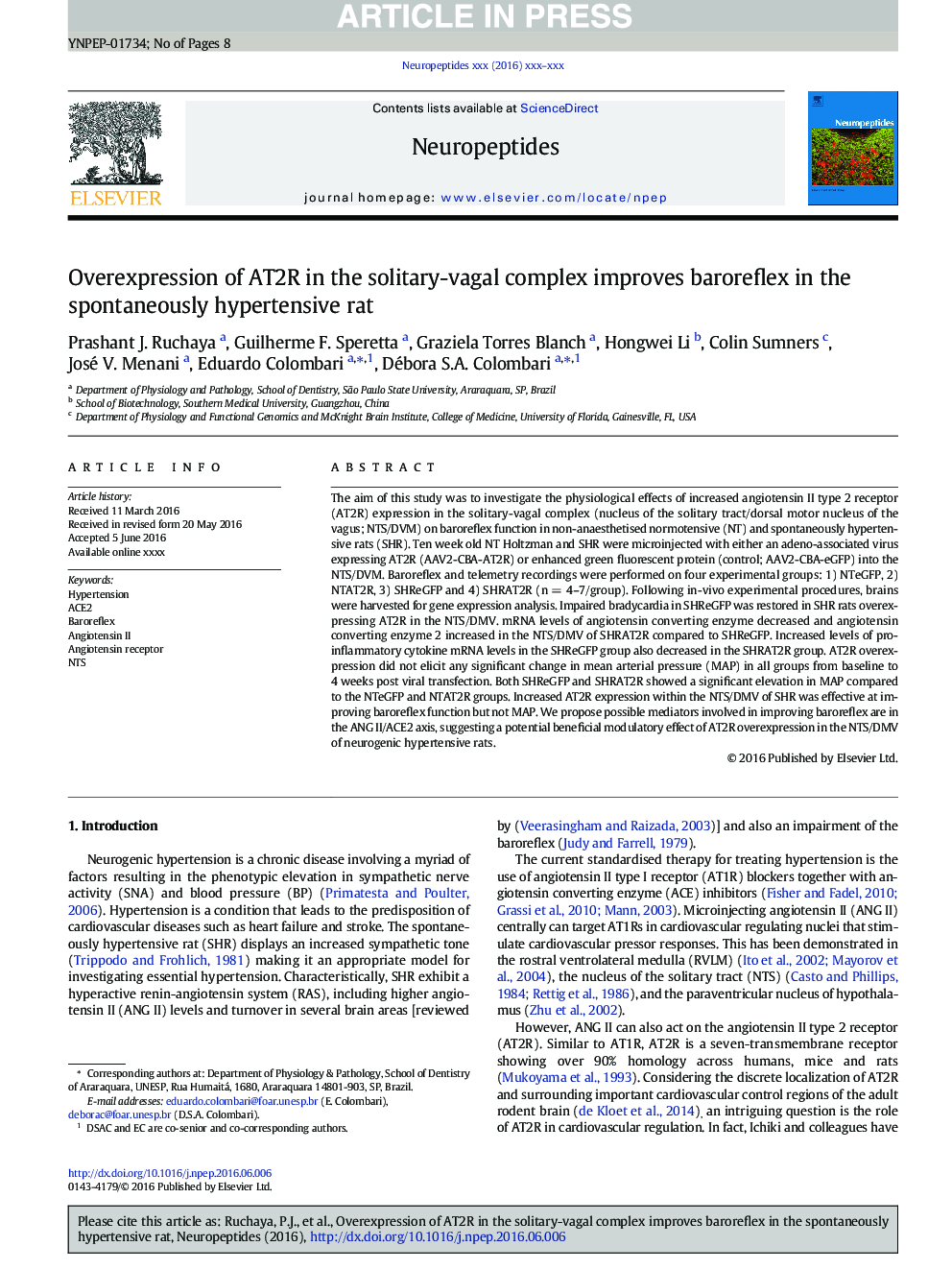| Article ID | Journal | Published Year | Pages | File Type |
|---|---|---|---|---|
| 8633841 | Neuropeptides | 2016 | 8 Pages |
Abstract
The aim of this study was to investigate the physiological effects of increased angiotensin II type 2 receptor (AT2R) expression in the solitary-vagal complex (nucleus of the solitary tract/dorsal motor nucleus of the vagus; NTS/DVM) on baroreflex function in non-anaesthetised normotensive (NT) and spontaneously hypertensive rats (SHR). Ten week old NT Holtzman and SHR were microinjected with either an adeno-associated virus expressing AT2R (AAV2-CBA-AT2R) or enhanced green fluorescent protein (control; AAV2-CBA-eGFP) into the NTS/DVM. Baroreflex and telemetry recordings were performed on four experimental groups: 1) NTeGFP, 2) NTAT2R, 3) SHReGFP and 4) SHRAT2R (n = 4-7/group). Following in-vivo experimental procedures, brains were harvested for gene expression analysis. Impaired bradycardia in SHReGFP was restored in SHR rats overexpressing AT2R in the NTS/DMV. mRNA levels of angiotensin converting enzyme decreased and angiotensin converting enzyme 2 increased in the NTS/DMV of SHRAT2R compared to SHReGFP. Increased levels of pro-inflammatory cytokine mRNA levels in the SHReGFP group also decreased in the SHRAT2R group. AT2R overexpression did not elicit any significant change in mean arterial pressure (MAP) in all groups from baseline to 4 weeks post viral transfection. Both SHReGFP and SHRAT2R showed a significant elevation in MAP compared to the NTeGFP and NTAT2R groups. Increased AT2R expression within the NTS/DMV of SHR was effective at improving baroreflex function but not MAP. We propose possible mediators involved in improving baroreflex are in the ANG II/ACE2 axis, suggesting a potential beneficial modulatory effect of AT2R overexpression in the NTS/DMV of neurogenic hypertensive rats.
Related Topics
Life Sciences
Biochemistry, Genetics and Molecular Biology
Endocrinology
Authors
Prashant J. Ruchaya, Guilherme F. Speretta, Graziela Torres Blanch, Hongwei Li, Colin Sumners, José V. Menani, Eduardo Colombari, Débora S.A. Colombari,
